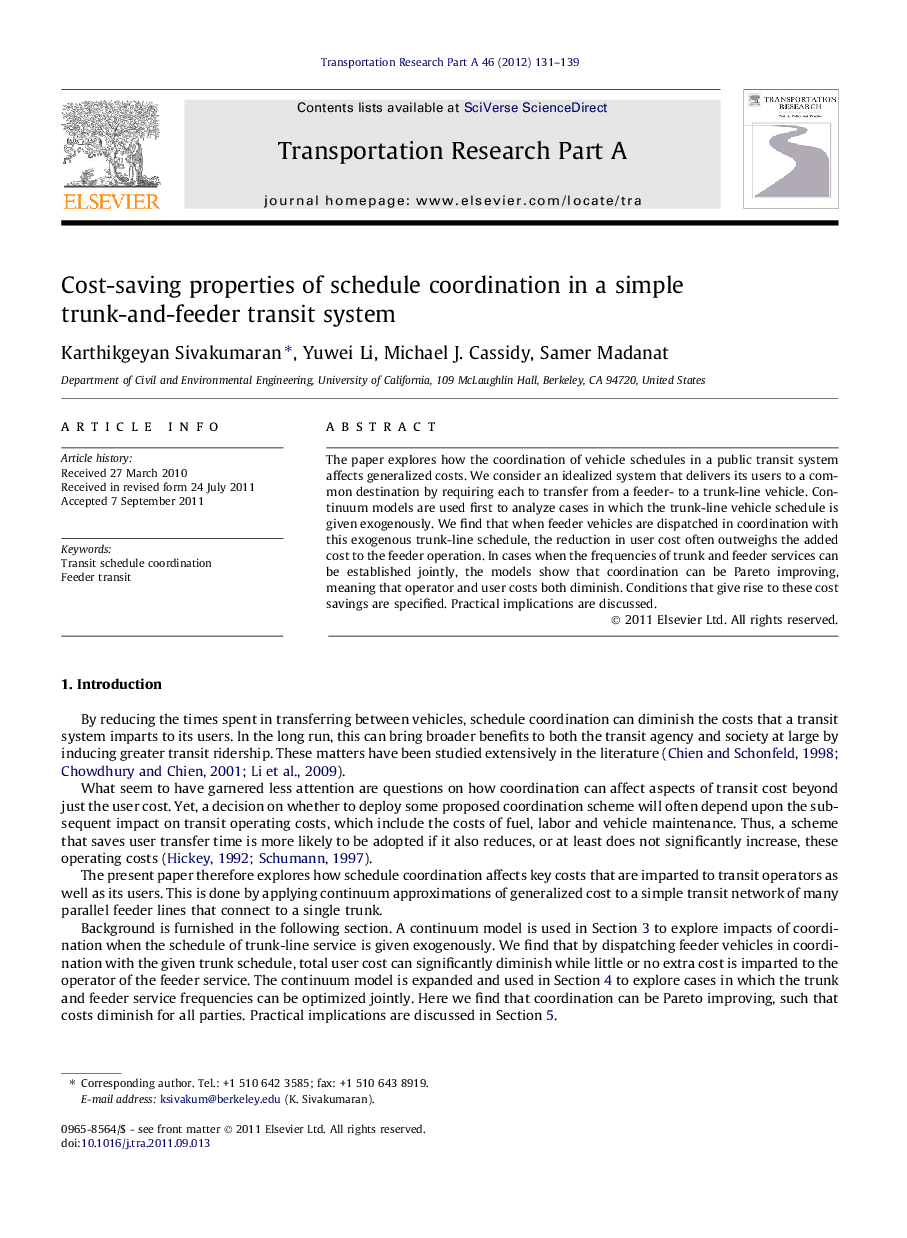| Article ID | Journal | Published Year | Pages | File Type |
|---|---|---|---|---|
| 310474 | Transportation Research Part A: Policy and Practice | 2012 | 9 Pages |
The paper explores how the coordination of vehicle schedules in a public transit system affects generalized costs. We consider an idealized system that delivers its users to a common destination by requiring each to transfer from a feeder- to a trunk-line vehicle. Continuum models are used first to analyze cases in which the trunk-line vehicle schedule is given exogenously. We find that when feeder vehicles are dispatched in coordination with this exogenous trunk-line schedule, the reduction in user cost often outweighs the added cost to the feeder operation. In cases when the frequencies of trunk and feeder services can be established jointly, the models show that coordination can be Pareto improving, meaning that operator and user costs both diminish. Conditions that give rise to these cost savings are specified. Practical implications are discussed.
► Trunk-feeder transit system for two cases: exogenous and endogenous trunk headways. ► For each case, costs of uncoordinated and coordinated service are compared. ► Exogenous trunk headways: schedule coordination can add little feeder agency cost. ► Endogenous trunk headways: schedule coordination can be Pareto-improving.
